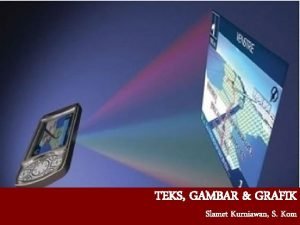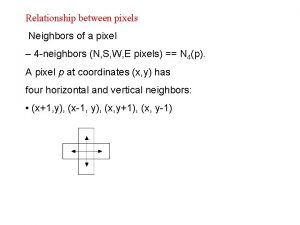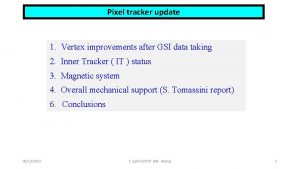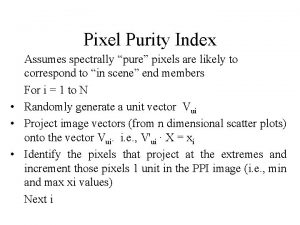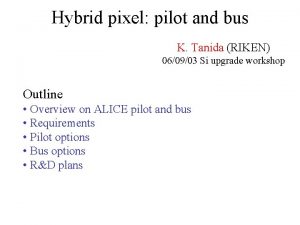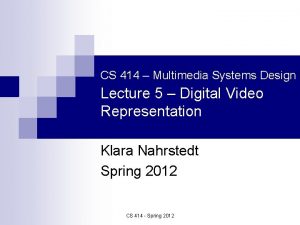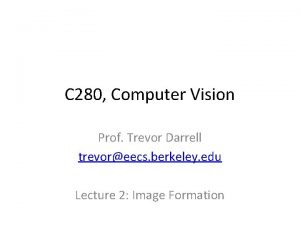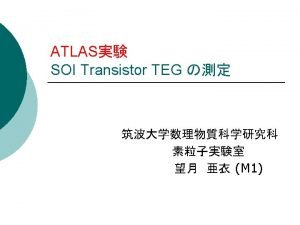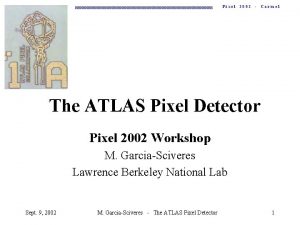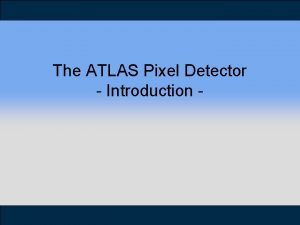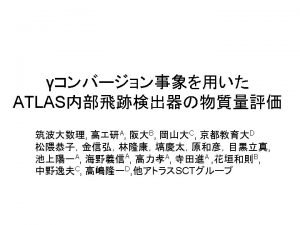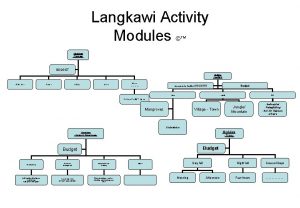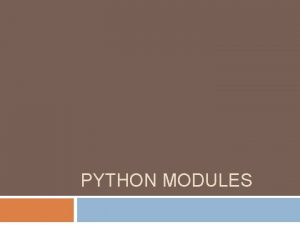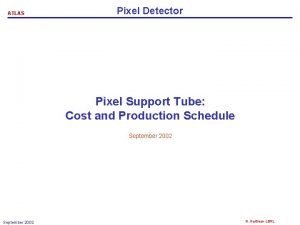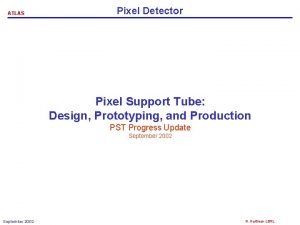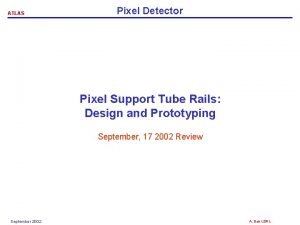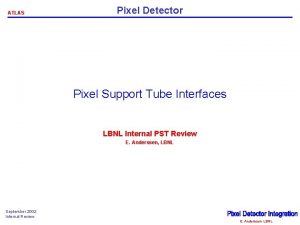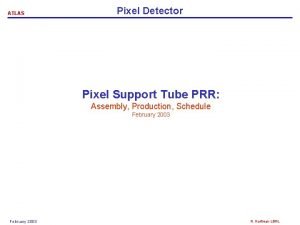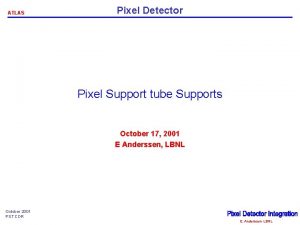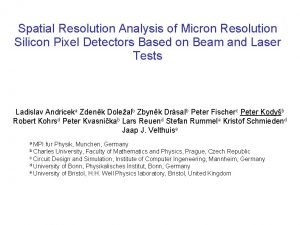TIME RESOLUTION IN ATLAS PIXEL MODULES OUTLINE Atlas
















- Slides: 16

TIME RESOLUTION IN ATLAS PIXEL MODULES

OUTLINE Ø Atlas Pixel Module Ø Timewalk Ø Measurements Ø Conclusions Ø Next steps…

ATLAS PIXEL MODULE The Atlas Pixel Module is made of: MCC Ø 1 Pixelated Silicon Sensor; Ø 16 Front-End Chips; Sensor FE Chip Ø 1 Module Control Chip (MCC). FE Chip

FRONT-END CHIP Ø Active dimension = 7. 2 mm x 10. 8 mm; Ø 18 x 160 = 2880 Pixels; Ø Pixel Size = 50 μm x 400 μm.

PIXEL CELL Pixel ID Time of the leading edge Time of the trailing edge Information produced in each pixel after a hit: Ø Pixel address; Ø Time of the hit (i. e. time of the leading edge) in units of 25 ns; Ø TOT = Time of the trailing edge – Time of the leading edge.

TIMEWALK The time when the preamplifier signals cross the threshold varies with the pulse height: the lower the pulse height, the later the signal crosses the threshold and consequently the later the pixel detects the hit. This effect is called timewalk and it is one of the limiting factors for the time resolution of the pixel chip. If two simultaneous hits have a large difference in the pulse height they will be assigned to two different clock cycles and not to the same trigger signal. In order to correct the timewalk one needs to know the value of the charge which generates the hit. So the idea is to try to find out in which way the TOT can be useful to correct the timewalk. TIMEWALK ? TOT

MEASUREMENTS Ø Calibration of the TOT Ø Timewalk measurements • Calibration of the delay line in the MCC; • Time vs Delay for different charges; • Timewalk vs Charge; • Overdrive; • Timewalk vs TOT.

CALIBRATION OF THE TOT The calibration of the TOT is done by injecting several pulses of a known charge and measuring the average TOT of the produced hits.

TIMEWALK MEASUREMENTS Ø MEASUREMENT PRINCIPLE Total Delay = MCC Delay + Chip Delay MCC Pixel Cell Ø MEASUREMENTS: • Varying the injection delay for a fixed charge to see when the hit is detected one clock cycle later (i. e. calibration of the delay line in the MCC); • Choose an appropriate range of the MCC delay and inject different known charges to study how the time behaves as a function of the delay for different charges (time vs delay).

CALIBRATION OF THE DELAY LINE IN THE MCC The value of the injection delay is written into a 10 bits register in the MCC. The lowest 6 bits define the delay within a given range, the next 4 bits define the range of the delay. To calibrate the MCC delay the best choice is to scan 64 points in the range between (64·N) to (64·N)+63, where N is a 4 bits number which defines the delay range. Hits detected in the 7 th clock cycle 25 ns Hits detected in the 6 th clock cycle Hits detected in the 5 th clock cycle Conversion factor = 0. 83 ns

TIME VS DELAY FOR DIFFERENT CHARGES 10000 e 50000 e 20000 e Timewalk = [(Time · 25) – (0. 83 · MCC Delay)] ns

TIMEWALK VS CHARGE Overdrive = In-time threshold – Discriminator threshold

OVERDRIVE Resolution = 25 ns Resolution = 12. 5 ns

TIMEWALK VS TOT

CONCLUSIONS Ø Charges < 6000 e are detected one clock cycle later than the reference charge Ø High time resolution (better than 25 ns) means that the required charge is even bigger But… …it is possible to use the TOT (one of the hit information) to know the timewalk of different charges.

NEXT STEPS… Ø Find out how to use the timewalk information • To correct the total delay of the different charges; • To reach a higher resolution. Ø Change the preamplifier current in order to have faster pixels.
 High resolution low resolution
High resolution low resolution Conflict resolution outline
Conflict resolution outline Sentence outline examples
Sentence outline examples Elapsed time
Elapsed time Otrs service desk
Otrs service desk Epipolar geometry tutorial
Epipolar geometry tutorial Setiap pixel didefinisikan secara terpisah
Setiap pixel didefinisikan secara terpisah Basic relationships between pixels
Basic relationships between pixels Pixel gsi
Pixel gsi Pixel recurrent neural networks.
Pixel recurrent neural networks. Index of pixels
Index of pixels Pixel pilot
Pixel pilot A pixel p at coordinates
A pixel p at coordinates Pixel aspect ratio
Pixel aspect ratio Implementation support
Implementation support Pixel coordinates
Pixel coordinates 32*32 pixel image
32*32 pixel image






